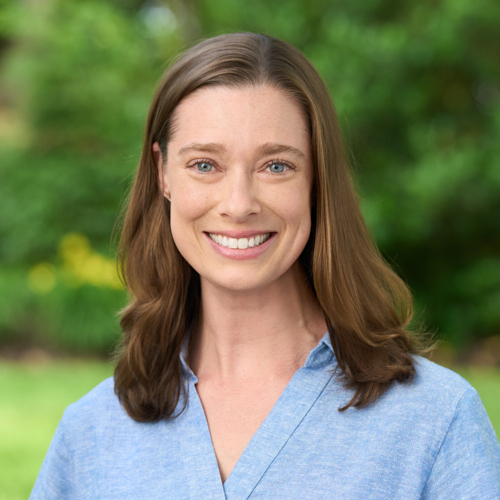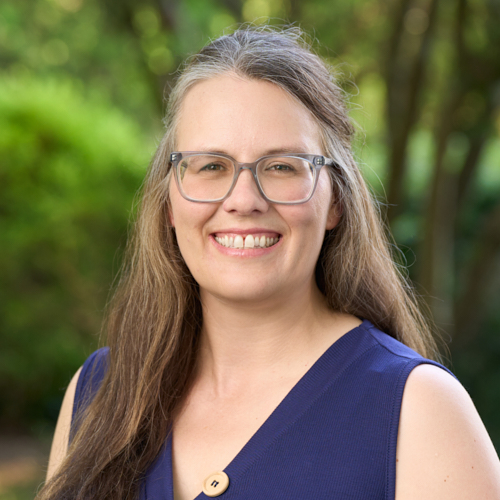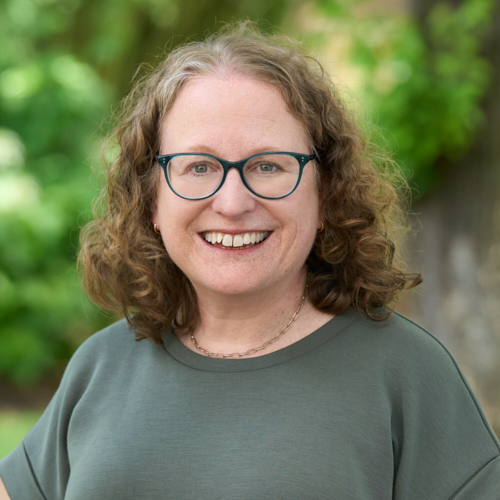Year in Review Discussion with Population Connection
We wrapped up the year with a presentation from senior staff highlighting our organization’s most significant accomplishments in 2023! Population Connection’s staff will walk you through our PopEd program’s latest offerings for K-12 students and educators, explain how our advocacy and field teams are responding to changes in the reproductive rights advocacy landscape, give an overview of outreach efforts by our communications team to inform the public about population issues and share updates from our Global Partners program.
Presentation Date: December 14th, 2023
World of 8 Billion Student Video Contest
Population Education webinars
Our Policy Priorities
Capitol Hill Days 2023
#Fight4HER
PopConnect Media Coverage
Member Media Hits
Media Guide: LTEs and Op-Eds
Population Connection Quarterly Magazine
Blog Posts
Population Studies for Higher Education
Global Partners Program
You can support our Global Partners through year-end and have your donation matched, dollar for dollar, up to $250,000!
Q&A
Questions from audience, with responses from Marian Starkey, VP for Communications; Pam Wasserman, Senior VP for Education; Rebecca Harrington, Senior Director of Advocacy & Outreach; Brian Dixon, Senior VP for Governmental & Political Affairs; Lee Polansky, Senior Director of Executive Initiatives & Special Projects; and Hannah Evans, Senior Analyst
Responding to Common Population Growth Concerns
How do we respond to claims that the world population is decreasing?
Response from Marian: We recommend sharing the actual demographic data, some of which we’ve gathered for your quick reference here.
What is the status of the debate regarding the economic downside of stabilizing/declining populations?
Response from Marian: Many economists, businesspeople, and politicians are concerned about the shifting age structure and the burden that could place on a smaller pool of “working-age” people relative to the pool of elderly people, and they’re getting most of the media attention on this topic. There are people arguing for commonsense solutions though, including Dean Baker, who wrote the feature article for the September issue of our magazine.
Our Communications Team also did a panel for World Population Day in July that focused heavily on this topic.
What is the best response when someone claims we have plenty of space in the U.S. to grow, implying that we don’t have a population problem in our country?
Response from Pam: There used to be an old trope that the entire U.S. population could fit within the state of Texas, so what’s the problem? Of course, people need more resources than just a square plot of land. Think of all of the resources we depend upon – water, food, energy, shelter, etc. Beyond the necessities, we want to maintain wild lands so that we have a rich biodiversity. There are also social and economic considerations – adequate employment and educational opportunities, safety, adequate infrastructure, nature to enjoy, ….the list goes on. You may also respond by pointing out that there are many examples of communities that have grown so rapidly that residents’ needs are not being adequately met (too few services, too much traffic, too little housing, etc.)
Why not advocate for the reduction of world population rather than stabilization? In light of the recent exponential growth in world population, reduction seems to be a reasonable position.
Response from Marian: This is a valid question and one we’ve asked ourselves internally as well. It really just comes down to semantics. In order for the world population to decline, it must first peak, and since we’re still adding around 80 million people to the planet each year, we’re currently focused on reaching that peak as soon as possible. Once the peak comes, decline will soon follow. Population stabilization is the common phrasing people in this movement use, but the collective aim isn’t to hit 8, 9, or 10 billion and then stabilize there—it’s to hit the lowest peak possible and then gradually begin to decline until we reach a level that sustainably allows all people to live safely, comfortably, and in good health.
How do I respond to comments that family planning is racist?
Response from Rebecca: Acknowledging from the top that there have been racist things done in the name of family planning and population control is an important step in having an honest and comprehensive conversation about population. And then it’s important to share that in a large part of the world—for instance many countries in sub-Saharan Africa—population growth is very high, and so is poverty, resource scarcity, and inequity in education between girls and boys. Family planning is an essential tool to ensuring that girls and all people who are able to get pregnant are healthy, are able to wait until they are ready to get married and have children, and have the opportunity to go to school. We can’t and shouldn’t ever target populations based on race, ethnicity, gender, sexual orientation, etc—that is deeply wrong and unjust. Instead, we need to do whatever we can to fund voluntary programs that allow people to access family planning and comprehensive reproductive health care, if and when they want to. And research shows that most people, when given the option to have these services, want to take advantage of them.
How do we get the planet’s population back to 4 billion?
Response from Marian: Nobody knows what the ideal population of the world is because that’s so dependent on how each of us consumes resources. Without a catastrophe, our population won’t reach 4 billion in any of our lifetimes, but the way to eventually begin reducing the size of the population is to ensure that everyone has an education, good employment options, access to affordable health care, and agency over their bodies and lives.
How will climate change impact the world population estimates by birth or by migration?
Response from Marian: Mainstream population projections don’t consider climate change as determinants of future fertility, mortality, or migration—the three components of population change. This is just one of many reasons population projections must be taken with a grain of salt, which I mentioned during the live Q&A. We are already seeing mass movements of people (mostly internally, within their countries of origin) because of resource shortages and changing weather patterns due to climate change, but I’m not aware of any largescale data collection efforts that distinguish migrants by their reasons for seeking to resettle in new countries.
Addressing Population Challenges
What is the biggest hurdle to addressing the population problem? Is it money to get contraceptives to everyone who wants them, such as Africa or other low-income countries? Is it people’s religious beliefs that cause them to fight against family planning? What are the solutions to world population growth?
Response from Marian: People often assume that religious adherence is a major determinant of fertility rates, and it can certainly play a role. There are so many exceptions though, that it’s hard to draw a clear line. For example, some of the countries with the lowest fertility rates in the world have Catholic majorities: Malta, Spain, Italy, Portugal, Poland, etc. And you may be surprised to hear that most Latin American countries have fertility rates that are right around or well below replacement rate.
What the data more consistently show is that countries with robust family planning programs (programs that are voluntary and affordable and that provide direct service and also address cultural norms around childbearing and women’s role in society) have lower fertility rates, regardless of prevailing religious beliefs. This is good news because it means that fertility can decline anywhere. Even Iran had a very successful family planning for a couple of decades, which succeeded in rapidly bringing fertility down to below replacement rate from well over six children per women as recently as in the 1980s!
The bigger challenge, as you suspected, is adequate support for family planning. The Guttmacher Institute estimates that worldwide there is a $5.5 billion funding shortage to provide contraceptives and other reproductive health services to all women who want them. The U.S. contribution to international family planning efforts has been flat, around $600 million a year, for a decade, when our “fair share” contribution would be $1.74 billion a year. There are an estimated 257 million worldwide who have an unmet need for contraception. Addressing this unmet need is the path to addressing unsustainable population growth.
If politics aligned in this Country to Democrats being in power with the President, Senate & House, what should be the first actions taken to improve the status of these issues spoken about today?
Response from Brian: They should pass the Global Health, Empowerment and Rights (HER) Act that would prevent a future president from unilaterally imposing the Global Gag Rule – a policy that has devastated family planning and reproductive health programs around the world. They should act to provide $1.7 billion in funding for global family planning programs and ensure continued support for the United Nations Population Fund (UNFPA). They should fund the Title X family planning program at a level that ensures that all Americans who need those services can receive them. And they should repeal both the Helms and Hyde Amendments that deny safe abortion care to people who need it.
Do we have too many people in our nation to provide proper education, access to affordable healthcare and housing, maintain peace among them, etc.?
Response from Brian: The failure to invest in education, to ensure universal access to health care, to guarantee affordable housing, is like the similar refusal to invest in family planning and reproductive health programs, a problem of political will. And like the failure to recognize the impact of population growth, these challenges only get harder solve the longer we wait to address them.
Looking at Demographic Data
Since the population has doubled in the last 50 years, is enough being done to slow population growth?
Response from Marian: The population has doubled, but the total fertility rate has halved and now sits at 2.3 children per woman. That’s still above the replacement rate, but much of our population growth is due to population momentum (large numbers of people in their childbearing years), which takes a couple of generations to cycle through—think of the Baby Boomers creating a mini baby boom when they had their own children.
If everyone who wants to have a smaller family could do so, our population problem would eventually resolve itself.
Will there be enough impact to avoid a global population of 10 billion or more, and what population will we hit?
Response from Marian: Some demographers project that we’ll peak below 10 billion during this middle of the century due to economic development, increased education, and health improvements. I hope they’re right, but most other demographers don’t seem convinced that a peak that low is possible given our current trajectory. There is a $5.5 billion shortfall in the amount needed to ensure that everyone in the developing world who wants to prevent pregnancy has access to modern contraception, and the number of women of reproductive age in high-fertility countries is only growing, meaning that there are ever more women who need reproductive health services including family planning options.
The reality is that 10 billion is a very optimistic peak population. The latest United Nations projections show a peak at 10.4 billion in 2086, and even that is optimistic, according to many demographers and other population experts. It assumes that fertility will decline significantly in countries where birth rates are currently high. Without easy and affordable access to high-quality contraceptives and the education to use them properly and manage possible side effects, it seems unlikely that fertility rates will fall as quickly as the UN’s assumptions indicate. In that case, we’d be looking at a peak population of 11 billion or more.
The president of Uganda launched the Population Census program of 2024. Could you share what you think should be some of the major issues that should be considered for the nation to gain more success and accurate results to plan for the nation’s future?
Response from Marian: Without knowing anything about how the previous five post-independence censuses in Uganda have been conducted, I’m not sure what to suggest to improve the accuracy of results. I read that this will be the first time the census will be conducted digitally, in an effort to improve accuracy.
Education and Outreach Efforts
How can we make the “connection” to the myriad ways that population affects the planet and our daily lives? E.g. migration, homelessness, personal interactions, etc.
Response from Marian: We make that connection in our materials every day! You can learn how we talk about these connections by reading our magazine, blog, website, social media, emails, and teacher resources.
What is Population Connection doing to highlight the relationship between the growing population and Climate Change?
Response from Hannah: Our Population Studies for Higher Education program focuses its education and outreach on the varied connections between population and climate change. We work with college-level students and professors, as well as other organizations across the U.S. to explore the ways in which humans impact and are impacted by a changing climate. This program offers guest lectures, conference presentations, podcast and radio interviews, and panel discussions covering topics like population dynamics, climate vulnerability and justice, human impacts on the environment, demographic trends and their influences on climate change and adaptation, family planning as a climate solution, gender equality, and sustainable development. We also develop academic-style resources like informational papers, presentation slides, and recommended readings which are available for free download on our Population Studies for Higher Education. Each year, we contact between 40-60,000 college professors to advertise our services and typically administer around 100 guest lectures in classrooms across the country. Finally, our Senior Analyst, Hannah Evans, is now working as an adjunct professor in the department of Geography at the University of North Carolina, Greensboro (UNCG). She teaches an undergraduate course called “GES 303: World Population Problems” in which the connections between population and climate change are explored in great depth.
What can individuals do within your organization?
Response from Pam: If you are a teacher or know a teacher who would like to become more involved, we can let you know about upcoming PopEd workshops in your area. We also have training events specifically for K-12 educators and university education faculty who want to join our trainers’ network.
Response from Rebecca: Sign up to join the #Fight4HER! Use this form to contact your legislators asking them to support the Global HER Act, which would permanently end the Global Gag Rule. This will also get you on our #Fight4HER list, where we will share actions you can take, events you can join, and other ways to fight for reproductive freedom around the world.
How do I secure a listing of the Population teaching resources for youth?
Response from Pam: Population Education teacher resources are available here.
Global Partnerships
How do you measure the performance of the NGOs that you help support?
Response from Lee: We had a core group of about four grantees when we initiated the Global Partners Program. These were nonprofits that we had known and worked with for several years. As we gradually expanded the program, the core groups would refer organizations they knew well and may have collaborated with.
We vet each group referred by another; if they pass muster, they’ll usually receive a small grant to mark the beginning of our partnership. It’s important to remember that most Global Partner groups are small, some with only 2 – 3 people on staff; most groups have minimal budgets and run on a shoestring. Therefore, we ask many questions, such as their mission in the Population/Health/Environment (PHE) space; what kind of work they do; and if they seem to impact their stakeholders. We also ask if a potential partner can pivot quickly when necessary and if they are integrated into their community, not a top-down presence. Of course, there are far more outstanding needy groups than we can possibly support, so we are grateful to our members for enabling us to expand our efforts.
How do organizations get selected to become a Population Connection “partner”? Are there specific criteria or requirements that need to be met?
Response from Lee: We review each organization’s end of year report, which includes activities and a budget. Population Connection has been on the “other” side, receiving grants from large and small foundations. We therefore follow best practices for grant making and grant receiving. We have open, and direct, relationships with the Global Partners, and have true partnerships with each of them.
Do you discuss life planning concepts and resources with global partners? Do you invite CEOs of major charitable organizations in the U.S., such as UNICEF, Feed Hunger in America, Food Banks, etc., to participate?
Response from Lee: I’m unfamiliar with the term “life planning concepts.” However, I can say the NGOs with Population Connection grants know their communities best and know best how to address the issues they face. Without exception, our Global Partners focus on priority areas that result in smaller families and related reduced impact on the natural world. We do have many relationships with other charitable organizations. Each group has its own lane, as it were, so we work cooperatively.
We recognize that our Global Partners are, without exception, overstretched, with much more work to do than staff. We, therefore, strive to minimize any administrative and bureaucratic work. They do keep in touch with us, for example, sending reports on their activities and how they use their grants. Nonetheless, if they ask for help or suggestions, we humbly extend our ideas.
I don’t see “Population Connection” in Charity Navigator. Are you listed under anything else? What outside organization “rates” your organization for charity purposes?
Response from Marian: We’ve got a 4-star rating on Charity Navigator.




